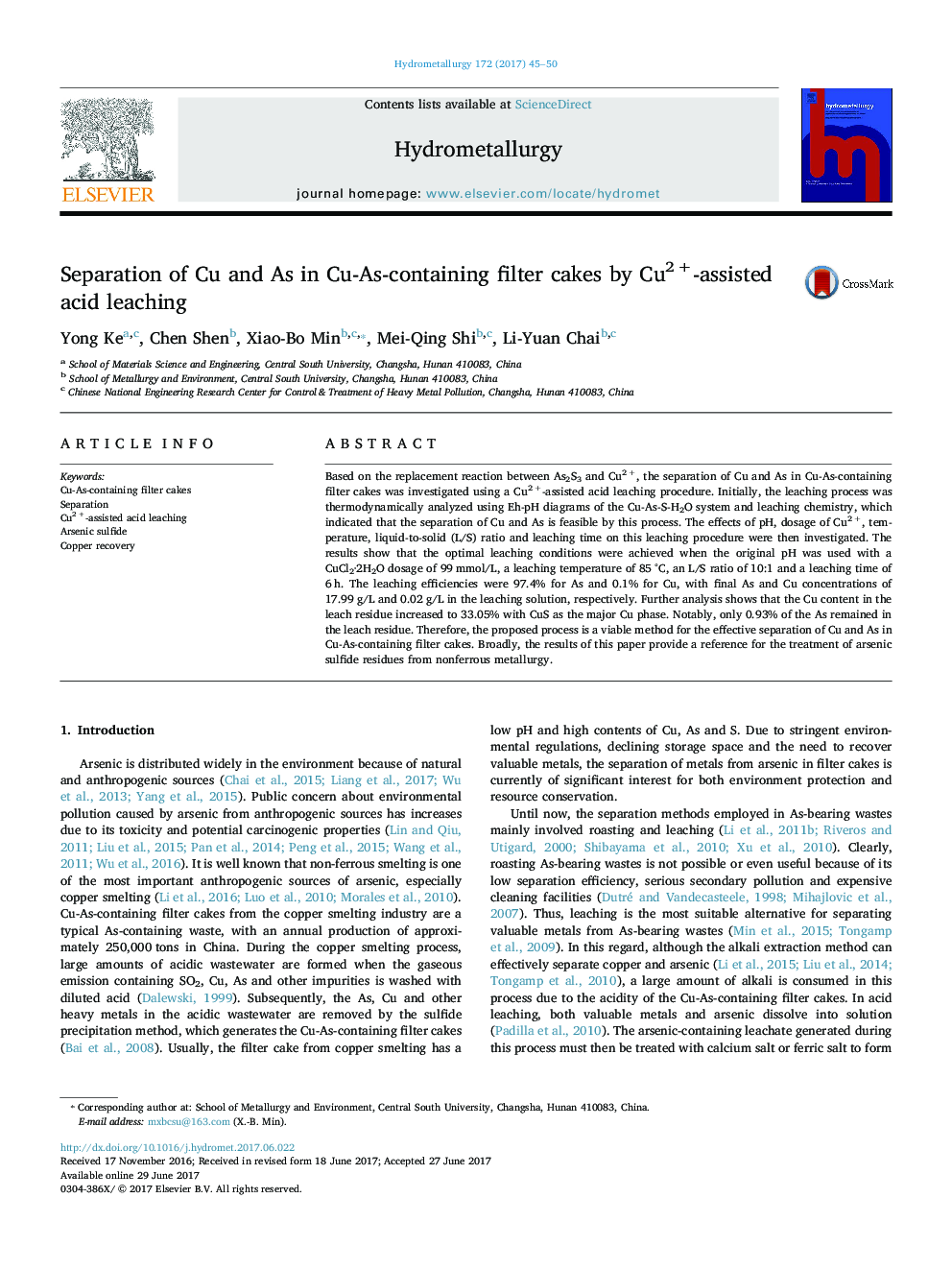| Article ID | Journal | Published Year | Pages | File Type |
|---|---|---|---|---|
| 4769030 | Hydrometallurgy | 2017 | 6 Pages |
Abstract
Based on the replacement reaction between As2S3 and Cu2 +, the separation of Cu and As in Cu-As-containing filter cakes was investigated using a Cu2 +-assisted acid leaching procedure. Initially, the leaching process was thermodynamically analyzed using Eh-pH diagrams of the Cu-As-S-H2O system and leaching chemistry, which indicated that the separation of Cu and As is feasible by this process. The effects of pH, dosage of Cu2 +, temperature, liquid-to-solid (L/S) ratio and leaching time on this leaching procedure were then investigated. The results show that the optimal leaching conditions were achieved when the original pH was used with a CuCl2·2H2O dosage of 99 mmol/L, a leaching temperature of 85 °C, an L/S ratio of 10:1 and a leaching time of 6 h. The leaching efficiencies were 97.4% for As and 0.1% for Cu, with final As and Cu concentrations of 17.99 g/L and 0.02 g/L in the leaching solution, respectively. Further analysis shows that the Cu content in the leach residue increased to 33.05% with CuS as the major Cu phase. Notably, only 0.93% of the As remained in the leach residue. Therefore, the proposed process is a viable method for the effective separation of Cu and As in Cu-As-containing filter cakes. Broadly, the results of this paper provide a reference for the treatment of arsenic sulfide residues from nonferrous metallurgy.
Related Topics
Physical Sciences and Engineering
Chemical Engineering
Chemical Engineering (General)
Authors
Yong Ke, Chen Shen, Xiao-Bo Min, Mei-Qing Shi, Li-Yuan Chai,
